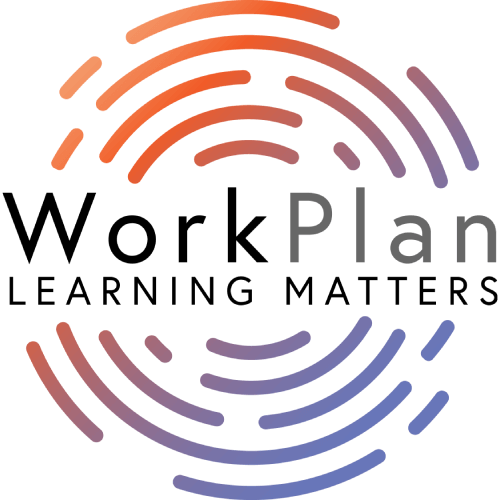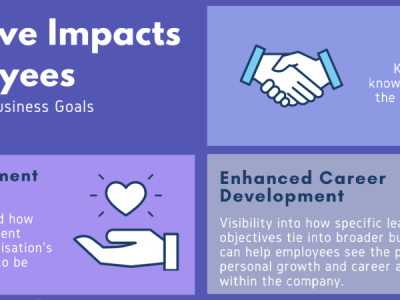Brian Clark, WorkPlan Director, shares a simple guide he uses to create a change management plan.
There is one thing for certain about change management; too many change projects fail to meet their goals. Depending upon the scale of a change project, failure always leads to frustration and in worse cases has a negative impact on culture, interpersonal relationships, reputations, and finances.
There are a number of change management models that are known and used, and each has its fans and detractors because there is no ‘right way’ to develop a change management plan. In this article, I am offering a simple guide to creating a change management plan; it will not go into specific details about each of the elements included in my outline.
When I work with clients, I of course take them on a journey providing much more detail in each element and there may be more than one change management plan or a more complex plan, involving more elements if this is required for larger and more complex change management projects.
The purpose of a change management plan is to provide a clear executable path to achieving an identifiable result aligned with your goals for the change project. Organisations will create a change management plan to help reduce impacts on the existing flow of the business and the people who are undertaking their normal tasks and activities.
Regardless of the scope of the change initiative, I believe there is always a need for a plan. Small scale change still needs a plan to ensure you achieve the purpose of the change and the goals you have set for it. In a simple change plan, you may only need one or two people operating off a shared task list. However, as the scale of change increases, there are more variables to consider and hence there may be a need for more people and more sophisticated collaboration and project tools.
Step 1: The Vision
The vision is composed of two parts and this element of a change plan is very similar to how we get started developing a strategic plan. The vision:
- Clearly states the ultimate goal of the change initiative. The goal can be high level, for example, ‘Improve our people engagement score by X’, or ‘Create and roll out an improved performance appraisal methodology’.
- Provides clarity about what success looks like for the organisation. This is the change from status quo to what reality will be with the change management project executed successfully.
Both elements of the vision need to be written down and shared with key stakeholders of the change project and people impacted by it both during the project and after completion.
Step 2: Goals
You can start with your vision and work backwards to identify goals that, upon achieving, will achieve a successful outcome for your change project. When considering your goals, here are some points to consider:
- Consider how the change project is going to impact the organisation, the current flow of work, people, customers, and other stakeholders.
- Create some KPIs or simple objectives to measure the success of the change project both during and after completion. You may wish to use different ways to capture these measures as well, for instance, surveys, interviews, workflow data or whatever is applicable to the change project.
- A strategy for building engagement and buy-in from people in the organisation should be started at this stage of the plan development. You may not have it finalised until you are working with the selected team, but at least, add buy-in to your goals and some ways you are going to drive high levels of buy-in and engagement across your organisation.
Step 3: Team
You may already have a team helping you with the first two stages of developing your change management plan. You may have also consulted different people both inside and outside your organisation to assist with crafting your vision and goals. In this case, you may already have the right people to work on the change project. If not, you now need to assemble your change project team.
Your team may remain the same throughout the change project, or some people may drop off and others added during the change project. In complex change projects, you may have multiple teams.
Here are some pointers for assembling a team:
-
- Identify key stakeholders to the change your project is focused on achieving and consider requesting people to join your project team from this cohort. These people typically assist in achieving success for your project and increased engagement across the organisation.
- Subject matter experts are highly recommended, whether they are inside or outside your organisation. A subject matter expert may not always be a regular member of the team but consulted with, on an ‘as needed’ basis.
- The management team should be considered for selecting team members. People from appropriate levels of management with accountability for areas linked to your change project are invaluable for expediting decision-making, answering questions and being aware of any implications that may impact the change project.
Step 4: Develop the Change Plan
There are some elements that are part of every plan. These are the scope, resources, budget, and timeline. All these need to be documented, and I recommend they are documented in different ways. Many people rely on a written text-heavy document and that is ok. However, I suggest you consider using other ways to document your change plan; these include mind maps, Kan-Ban boards, flowcharts, and other visual means to illustrate the plan to others who may balk at reading a written document. You need to consider what audiences require what information and tailor the medium used in communicating your plan accordingly.
Here are some basic points:
-
- Establish communication protocols and methods upfront. Do not rely on people choosing their own way to communicate and manage their activities in the project, as this will lead to inefficiency, sloppy execution, and greater risk of a failed project.
- Create a task or action item checklist. Record every task required and the communication and feedback mechanisms for each if they vary.
- Create a timeline that includes deadlines for every task/action item and the overall completion date for the change project.
- Consider using project management tools. In very simple change projects, you may get away with a shared task list, but in most cases, this will not suffice. You want to have easy to use, adaptable tools that support project management and collaboration.
Step 5: Execution
Now everything should be in place to make things happen. Your team should all be familiar with the project management and collaboration tools you are using as well as their role in the change project.
- Choose some tasks that will deliver some quick wins. This will give your project team confidence and will also increase the credibility of the change project.
- Build a decision-making process that will prevent delays and lack of decision clarity both in the team and more broadly in the organisation. The decision-making process should be as simple as practical. There may be some decisions that require input from people outside the project team and this should be included in your process, for example, senior management.
- Education and training for both your team and those impacted by the change project should be available at the outset. The education and training resources may grow over time. Ensure the training and other resources are linked and aligned to the goals of the change project and you may cascade these to a team level.
- Communicate regularly outside the team to highlight progress and wins achieved in the change project. This will build interest and engagement with the change process and encourage support and buy-in both during the project and after completion.
- Resistance is inevitable. Your training and education should help prevent most resistance. Have a resistance plan that may include a broader range of communication channels such as small team meetings and one-to-one discussions.
Step 6: Reinforcement
A change management project is never really completed. Sustainability is critical to avoid the organisation lapsing back into the ‘comfort zone’ of the way things used to be. This is sometimes the hardest part of the change project. The project team is usually disbanded at the end of the project and reinforcement is left to ad-hoc reactive corrections in behaviour and process.
The key to building sustainability is positive reinforcement. People react better to being recognised and rewarded than dealing with repercussions of non-conformity. These are some ideas you might consider.
- Create a strategy for positive reinforcement. How will people be recognised? Will there be actual rewards of some kind? Encourage management to continuously communicate the benefits of the change and recognise people for their efforts. Build these communications into the organisation’s intranet, newsletter or any other communications channel used.
- Obstacles are bound to occur despite your great planning and execution. Create some plans that you can use when obstacles occur and you may need to alter some aspect of the change initiative or pivot to another way of doing things, either temporarily or permanently. If you are prepared, you are less likely to cause uncertainty among those impacted by the change project.
WorkPlan Learning is designed to support Change Management Projects by providing the tools you need to build teams, align training to strategic goals and team objectives, and create tools and content with an easy-to-use content authoring tool, including checklists, quizzes, surveys and video – all of which are available in WorkPlan Learning.
I’ve been working with clients on change management for over 20 years now. I work with my client through every stage of their change management project with plan development, training needs analysis, content development and strategic advisory.
If you are about to begin a change management project and need some help or would like to learn more about WorkPlan, get in touch.
How WorkPlan Learning can help
WorkPlan Learning is a collaborative LMS that keeps all your business’s training content in one place, making professional development easily accessible to all your employees. The collaborative capabilities of WorkPlan Learning allow your employees to keep on top of their professional development by giving them room to give feedback and raise any gaps in knowledge.
Contact us to try our free demo.
Related Articles
Are you ready to take your business to another level?
Contact us today
Head Office
1300 726 708
+61 7 3220 2229
Melbourne Office
+61 3 9752 5651
In the spirit of reconciliation WorkPlan acknowledges the Traditional Custodians of country throughout Australia and their connections to land, sea and community. We pay our respect to their Elders past and present and extend that respect to all Aboriginal and Torres Strait Islander peoples.



